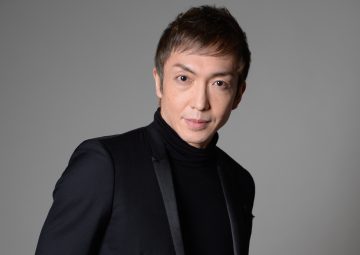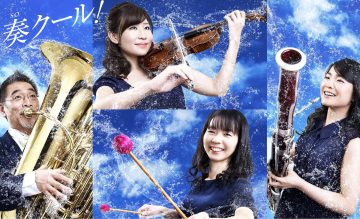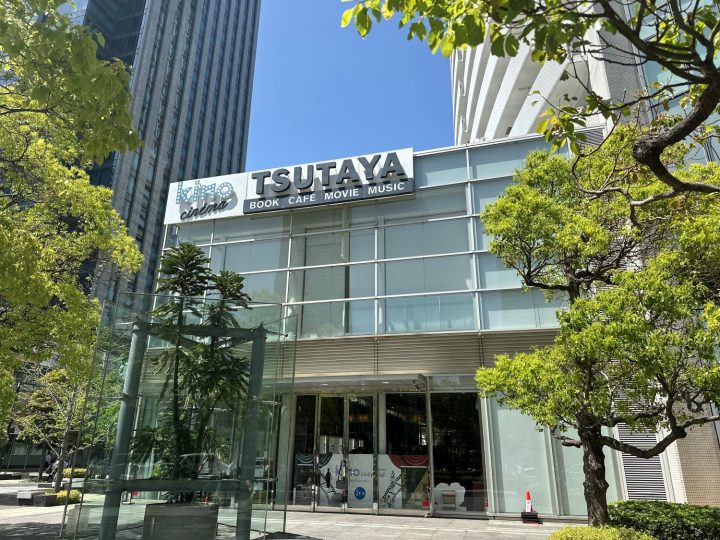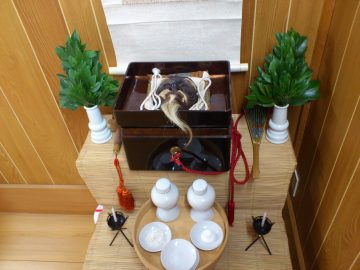Magcal Report in TPAM 2014 / TPAM Direction, Takuo Miyanaga Direction
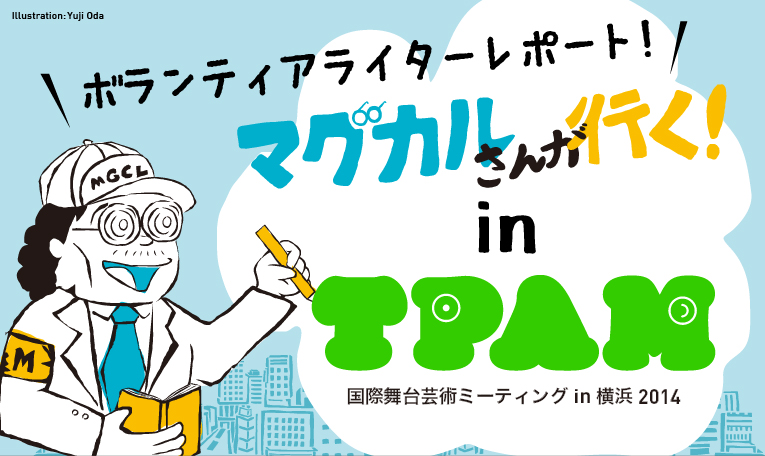
What is TPAM Direction?
Young creators engaged in unique activities have been appointed as directors, and the program will be created with original concepts and new perspectives.
This will be an opportunity to share contemporary ideas and challenges through each other's direction and to consider together the possibilities of performing arts.
/////////////////////////////////////////////////// //////////////////////////// /////////////////////////////////////////////////// ////////////////////////////
Direction by Takuo Miyanaga
Hideaki Hamada x Hii Takizawa x Yukio Shiba: An exhibition called "Theater"
Yokohama Creative City Center 1F
2.11 Tue – 2.16 Sun
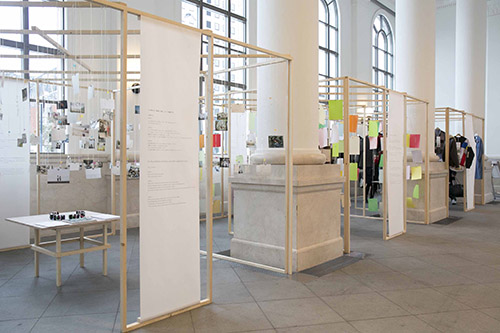
On the first floor of the Yokohama Creative City Center, a work titled "An Exhibition Called 'Theater'" by three artists, Hamada Hideaki, Takizawa Hii, and Shiba Yukio, was on display.
The three artists, Hamada Hideaki (photography), Takizawa Hii (clothing) and Shiba Yukio (words), are exhibiting in the media they each specialise in, but rather than a collaboration between the three, I think the easiest way to explain it is that each artist is presenting work in their own booth, making use of their own expertise based on an overall theme.
What was impressive about what director Miyanaga-san said was, "There are always theatrical moments in everyday life. I hope that you can feel those moments through this exhibition."
What this means is that this exhibition is not just a brief "exhibition," but a device that allows visitors to experience the theatrical moments that exist in everyday life.
Below, I will report on each of the three "devices."
The space on the far left is an exhibition by photographer Hamada Hideaki.
Photographs are displayed throughout the space, and photos taken by visitors during the exhibition are being added. To add photos, visitors must rent an instant camera placed in the center, but if you look closely, you will see the instruction "Take a photo of tomorrow." Of course, photos capture the present, and the moment you take a photo, it becomes the past, but in this exhibition, you have to take a photo of the future. Participants go outside with their cameras (although it is not necessary), and as they press the shutter, they will imagine the future in the scene they see, and even after taking the photo, they will be thinking about various aspects of their daily lives from the present to that future.

Furthermore, the sight of the "camera photographing the future" served as a device that evoked infinite stories, including the photographs on display, even for those who were not participants, and one could feel the strange sensation of having stepped into the past while still being in the present.
————————————————————————————————————————————————— ——————————
The central space is an exhibition by Shiba Yukio.
As a playwright and director, he created an exhibition that primarily used "words."
Visitors choose a number from the box and then select a letter from inside, and the letter is then assigned a specific location to open, according to the number, so viewers are asked to read the letter at the location marked on the map.
You can also write a reply to the letters you have read and mail it, but your reply will be delivered to someone you don't know, and you (the other mailers) will receive a reply to the letter you selected by mail from someone you don't know.

I actually picked up the letter and opened it at the designated location.
If you look at the photo you will understand what it says; the writer of the letter is about to go to the sea to cry.
I wrote a reply, mentioning the recommended "Ice Cream," and mailed it.

Immediately after the event, a reply written by someone else was sent to me in the reply envelope that I had written.
I won't include the exact words, but it seems he was worried about me as I sat eating ice cream by the sea in this cold winter, about to cry.
Although it was not clear who the letter was from, by reading it alone in the designated place, the place one was in, as well as the scenery and people around it, all seemed to relate to one another, and the work drew one in with the feeling that "perhaps my day was connected to this person somewhere," as if the ordinary everyday scenery was part of a story that came together in one place in one's head even after the event.
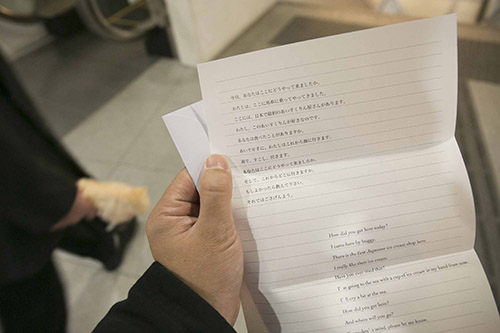
————————————————————————————————————————————————— ——————————
Lastly, the work by Takizawa Hii is on the far right of the booth.
Takizawa Hii specializes in fashion, and in this exhibition she attempted to create works that use clothing to tell stories within the everyday.
The clothes on display were not made but borrowed, but when you pick them up you will find that they are accompanied by a message that includes a profile of the person who is believed to have owned them and an anecdote from that person's life that made a lasting impression. Just reading this message makes it very interesting to imagine the story of the owner's life that can be imagined from the clothing.
It is also possible to borrow the clothes and go out into town wearing them; those who borrow them can take a photo of themselves wearing the clothes and then return them to the booth along with the clothes.

Clothing evokes an image of its owner without the need for words, such as its design or state of distress, and the act of a completely unrelated person borrowing and wearing it may give them a sense of entering into that person's story.
Furthermore, the sight of the increasing number of photos of people wearing the clothes evoked not only the owner of the clothing but also the story of each person who wore it, and it seemed like an exhibition that made one keenly aware of how clothing plays an important role in inviting one into a story, like a costume in a play.
In fact, it is unclear whether the owner of this clothing actually exists, but that is not important here.
Just through the clothes and text I could sense the various stories contained within them, and even though I was right there in the venue, I felt as if I was able to see a landscape farther into the distance.

In this way, each artist in this exhibition utilized their own expertise and used different media to propose devices that invite viewers into theatrical moments (stories) within everyday life.
There was no special stage equipment set up in the venue, but as we viewed the exhibits through words and imagination, our consciousness felt as if it was expanding onto a much larger stage, which was very pleasant, and what I felt most was that even after I had finished looking at the exhibits, the everyday life that I had been looking at without paying any attention to until then seemed to have changed a little.
I think it was an exhibition that left you feeling both refreshed and warm, by experiencing stories that you don't normally think about, such as an unknown future, a past, someone you don't know and yourself.
